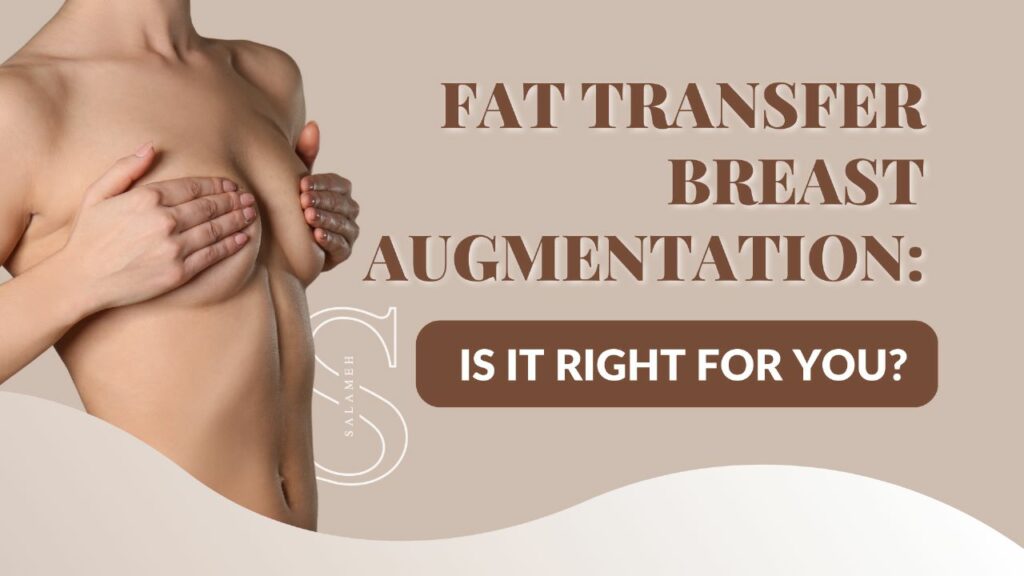Fat Transfer Breast Augmentation is a cosmetic procedure that uses a patient’s fat to augment and enhance the size and shape of their breasts.
Compared to traditional breast augmentation procedures that use implants, this one is considered a unique method. The process involves the transfer of fat from one area of the body to the breasts. The primary aim is to provide breast enhancement with a more natural look and feel.
The popularity of fat-transfer breast augmentation has increased significantly in recent years. This is mainly due to its various advantages when compared to traditional breast augmentation methods.
The American Society of Plastic Surgeons (ASPS) stated that the number of fat transfer breast augmentation procedures performed in the United States alone increased by 72% between 2018 and 2019.
One of the most significant benefits of this procedure is that it provides a more natural look and feel as it heals. Unlike implants, which can sometimes appear artificial, a fat transfer breast augmentation offers a more subtle and natural appearance. Additionally, the procedure typically involves minimal scarring and a reduced risk of complications associated with implants.
This blog aims to provide comprehensive information about fat transfer breast augmentation – including the best candidate, benefits, risks, and it’s expectations.
Here, we will also address common concerns and questions patients should have before undergoing the procedure.

Whether you are considering a fat transfer breast augmentation procedure. Or if you just want to learn more about it, this post will provide a useful starting point.
Benefits of Fat Transfer Breast Augmentation
Fat Transfer Breast Augmentation is a popular option for those seeking a subtle and natural enhancement to their breasts. Among its benefits include the following:
Natural Look and Feel
One of the most significant benefits of fat transfer breast augmentation is the natural look and feel of the results. Unlike implants, which can sometimes appear artificial.
This procedure uses the patient’s fat to enhance the size and shape of their breasts. Resulting in a more subtle and natural appearance. This can significantly boost a patient’s self-confidence and body image.
Minimal Scarring
Fat transfer breast augmentation is also known for its minimal scarring. Unlike traditional augmentation methods that require incisions in the breasts, this procedure involves only tiny incisions during the liposuction process. This results in less scarring and a quicker recovery time.
Dual Procedure (Liposuction and Augmentation)
Fat transfer breast augmentation is often referred to as a dual procedure because it combines liposuction with augmentation. This means that in addition to enhancing the size and shape of their breasts, patients can also address unwanted fat deposits. This results in a more sculpted and proportionate figure.
Reduced Risk of Complications
Finally, fat transfer breast augmentation has a reduced risk of complications compared to traditional augmentation methods. Because the procedure uses the patient’s own fat, implant rejection or rupture is not a risk. And the fat cells are less likely to migrate or calcify over time.
Additionally, the liposuction aspect of the procedure reduces the risk of complications associated with implant placement.
Fat Transfer Breast Augmentation: Considerations Before the Operation
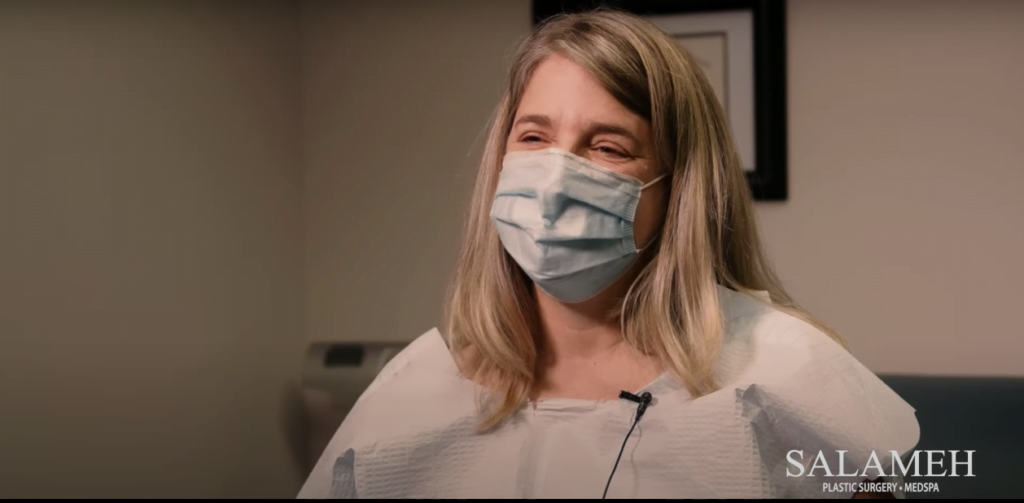
It is essential to consider the following factors before undergoing a fat transfer breast augmentation procedure:
Fat transfer breast augmentation cost
The price of fat transfer breast augmentation surgery can vary based on the place you get it done. It is also dependent on your doctor and the specifics of the operation.
Generally, this operation will cost you between $3,000 and $11,000. With the average cost being just over $6,000 – the same as traditional breast implant surgery. But with this procedure, you’ll have less scarring, no chance of rejection, and a more natural end result.
What are you paying for?
When considering the cost of fat transfer breast augmentation, you should take into account the surgeon and anesthesiologist’s fees. As well as other charges from the surgery center.
Additionally, you may need to purchase items like pain medications. You also need to go to follow-up visits, scar treatments, bandaging, and a post-surgery bra for extra support.
Will Insurance Cover It?
Insurance may not pay for plastic surgery. Fat transfer breast augmentation is considered a cosmetic treatment. But if the surgery is part of a reconstructive process (e.g. after a mastectomy) it might be classified as medical.
Contact your insurance company to find out more. If it still does not cover the cost, there are ways to pay for the procedure. This may include payment plans or loans.
Consult with a Board-Certified Plastic Surgeon

Before undergoing a fat transfer breast augmentation procedure, it is important to schedule a consultation with a board-certified plastic surgeon.
During this appointment, the surgeon will evaluate your medical history. He may also examine your breasts and discuss your goals and expectations for the procedure. They will also provide you with information on the procedure itself. Including the benefits and risks, and answer any questions you may have. At Salameh Plastic Surgery Center, we offer free, complimentary consultations for our future patients.
Discussion of Goals and Expectations with the Surgeon
Discussing your goals and expectations for the procedure during the consultation will be necessary. Make sure to talk about your desired size, shape, and projection.
You can also raise any other concerns or specific requests you may have. Your surgeon will use this information to aid him in developing a customized treatment plan. One that is tailored to your individual needs and goals.
Attend Medical Evaluations
Before the procedure, a medical evaluation will be performed. This is done to assess your overall health and ensure that you are a suitable candidate for the procedure. This may include tests such as blood work, an EKG, and other imaging studies, as well as a thorough physical examination.
Who are considered good candidates for fat transfer breast augmentation?
Women who want to enlarge their breasts without using implants. Or those who cannot have implants are typically excellent candidates for fat-transfer breast enhancement. This type of breast lift is ideal for individuals who lack the necessary skin for an implant. Also, for those who have lost breast volume due to pregnancy or weight changes.
The best candidate for this natural breast augmentation is an individual who;
- has enough amount of excess body fat for fat grafting to be transferred to her breasts;
- is not undergoing treatments for breast cancer;
- 18 years old and above;
- in good general health;
- is not a mother who is nursing or currently pregnant;
- has some experience with implant complications;
- does not smoke or can quit smoking weeks before the fat transfer; and, importantly,
- has realistic expectations.
Make sure to tell your surgeon to provide you with all the details, including what can and can’t be achieved during a fat transfer breast augmentation.
Fat Transfer Breast Augmentation: How does the Procedure Work?
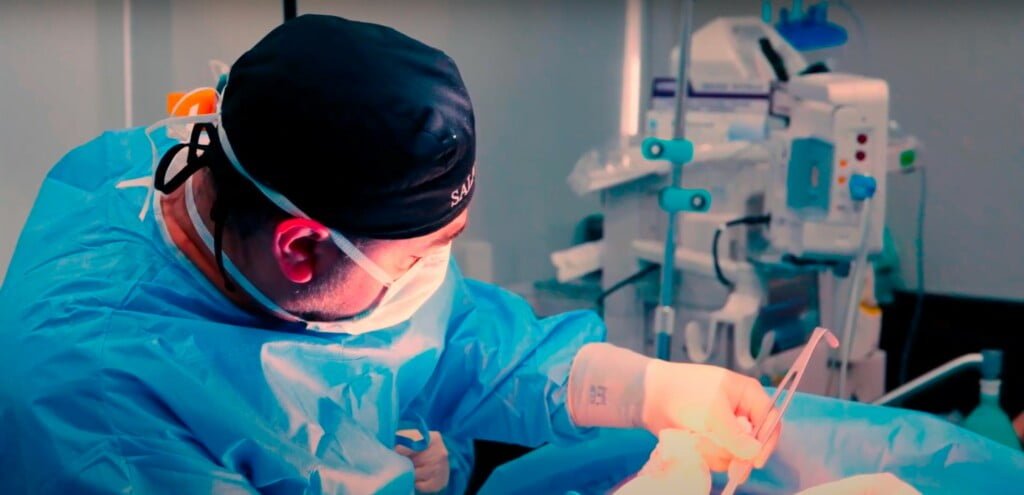
Fat transfer breast augmentation is a multi-step process. This involves liposuction to harvest fat, purify and prepare the fat for transfer, and inject the fat into the breasts. Here’s a sneak peek at how the procedure is done:
You will have to consider your anesthesia options.
Fat transfer breast augmentation is typically performed under general anesthesia, ensuring the patient is comfortable and pain-free throughout the procedure. Your plastic surgeon will discuss your best anesthesia option during your consultation.
Liposuction is done to harvest fat.
The initial step of this kind of breast augmentation procedure is to harvest fat from a fat-abundant body area. Such as the abdomen, hips, or thighs. This is done through liposuction, a minimally invasive procedure that removes excess fat using a small tube. The fat is suctioned through small incisions, leaving a smoother, more contoured appearance.
Purifying and Preparing the Fat for Transfer
Once the fat has been harvested, it is purified and prepared for transfer to the breasts. This is done by removing any remaining fluid, blood, and other impurities from the fat. Then, it is further processed to ensure the highest concentration of viable fat cells.
Injecting the Fat into the Breasts
The final step of the procedure is to inject the purified fat into the breasts. The purified fat is carefully injected into multiple layers of the breast tissue. This is done with the help of tiny cannulas to achieve the desired size and shape. The injection process is performed with precision and skill to ensure optimal results.
Post-Operative Care: Fat Transfer to Breast
Proper care after surgery is an essential part of the fat-transfer breast augmentation process.
This includes following your plastic surgeon’s instructions for care after surgery. Also, attending follow-up visits, and being aware of possible side effects and complications. These steps can help ensure a smooth and successful recovery and optimal results from your procedure.
Care After Surgery
After the fat transfer breast augmentation procedure, it is essential to follow your plastic surgeon’s instructions. This may include rest, avoiding strenuous activities, wearing a special bra, and taking prescribed medications.
You may also need to return to the clinic for follow-up visits to monitor your progress and ensure proper healing.
Follow-Up Visits
Follow-up visits with your plastic surgeon are important to monitor your progress and ensure proper healing. During these visits, your surgeon will assess your incisions, evaluate the procedure results, and provide you with necessary ongoing care instructions.
Possible Side Effects and Complications
As with any surgical procedure, there is a risk of side effects and complications following a fat-transfer breast augmentation. These may include swelling, bruising, discomfort, and changes in sensation. In rare cases, the results may be asymmetrical.
Discussing these potential risks with your plastic surgeon before the procedure is vital. And again, following all instructions after the operation to minimize the risk of complications is equally essential.
Fat Transfer Breast Augmentation: Are there risks? How Do You Manage them?
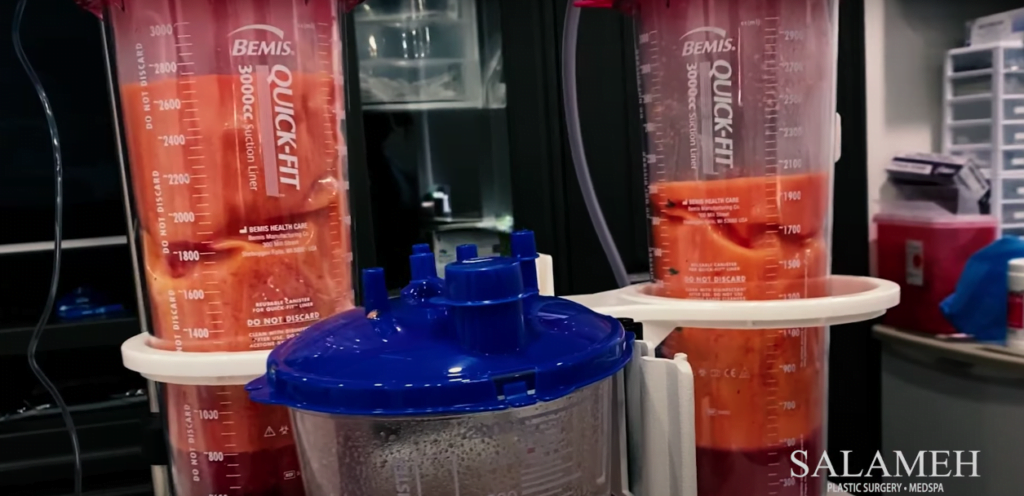
Like other cosmetic procedures, fat transfer breast augmentation also carries some risks, which include:
- Pain, swelling, and bruising at the fat donor and recipient sites
- Changes in sensation or numbness in the breast and nipple area
- Scarring or lumps at the donor and recipient sites
- Infection
- Calcification, which can be visible on mammograms and may resemble breast cancer
- Rippling or dimpling of the skin over the breasts
- Need for revision surgery to correct any dissatisfaction with the results
Results & Maintenance
By maintaining a healthy lifestyle and protecting your breasts from environmental factors, you can help ensure great results. Regular follow-up visits with your plastic surgeon can also help ensure your results are sustained.
Fat transfer breast augmentation provides long-term results as long as a healthy lifestyle is maintained. The transferred fat cells will integrate into the surrounding tissue and should remain in place for several years. The procedure results are considered permanent.
But it is crucial to keep in mind that the body may naturally change over time. Affecting the appearance of the breasts.
Maintaining a healthy lifestyle and weight is essential to keep the results of your fat-transfer breast augmentation.
Significant weight fluctuations can affect the volume and shape of the breasts. Additionally, it is vital to protect the breasts from sun exposure and other environmental factors that can cause damage over time. Regular follow-up visits with your plastic surgeon can also help ensure that your results are maintained over the long term.
Fat Transfer Breast Augmentation Before and After
One of the most significant advantages of fat transfer breast augmentation is that it avoids using foreign objects. Such as implants, which can often result in complications like ruptures, leaks, or capsular contractures. There is also a reduced risk of rejection or allergic reaction. Also, while increasing your cup size, this procedure can also promote weight loss due to the liposuction procedure to be done.
However, it’s important to note that this type of breast augmentation may not be suitable for everybody. The procedure is typically recommended for women who want a moderate increase in breast size. As well as those who have good skin elasticity, and have enough excess fat to harvest. Patients who are looking for a significant increase in breast size may still require implants.
If you’re interested in this procedure, you must consult a board-certified plastic surgeon with experience with the procedure. They can evaluate your case and help determine if this is the right option.
Fat Transfer Breast Augmentation in Indiana and Kentucky
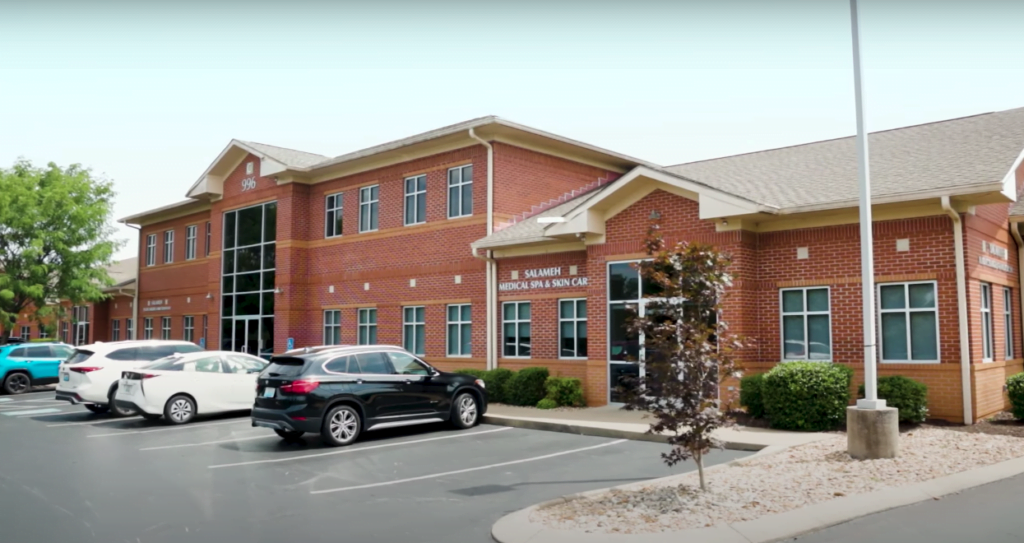
The Salameh Plastic Surgery Center could be an excellent choice if you’re considering fat transfer breast augmentation and you are near Indiana or Kentucky. Here are some reasons why:
The Salameh Plastic Surgery Center is home to double-board-certified plastic surgeons – who have extensive experience with different types of breast augmentation procedures. Our resident surgeons – Dr. Salameh and Dr. Saba, are trained to perform breast augmentation using fats with precision and skill, ensuring that you achieve the desired results.
Also, at Salameh Plastic Surgery Center, every patient is treated individually, and treatment plans are customized to meet their unique needs and goals. During your consultation, your plastic surgeon will discuss your concerns, evaluate your body type, and develop a plan to help you achieve your desired outcome.
We are also equipped with the latest technology and equipment, ensuring your procedure is safe and effective.
With experienced surgeons, customized treatment plans, comprehensive care, and state-of-the-art facilities, you can trust that you’ll be in good hands with us.
Click here for our breast augmentation before and after photos, or contact us today to book your consultation.
Schedule Your Free Consultation Today!
You may also want to check out our awake breast augmentation procedure: Awake Breast Augmentation by Dr. Salameh
Takeaway
As with any surgical procedure, carefully considering your goals and expectations is essential. Discuss the risks and benefits with your plastic surgeon. And fully understand the necessary care for faster recovery. With proper preparation, fat transfer breast augmentation can provide a safe and effective way for breast enhancement.

